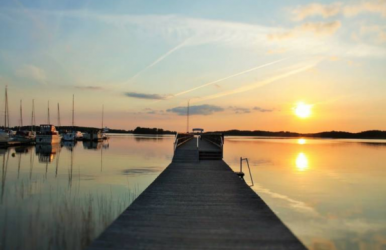Enjoying Your Holiday at the Bay of Biscay: 7 Considerations to Enjoy the Incredible Bilbao
BY Sibashree Feb 20, 2025
Located on the Biscayan coast, it is ideally situated just 200 meters from the beach, 12 minutes from the vibrant city of Bilbao, and 16 minutes from the airport. However, apart from severe weather, this place is a hotspot for marine life like dolphins and Whales. Therefore, your holiday trip to Bilbao is going to be memorable on the coast. Towns in Bilbao, like Getxo, Azpeitia, Ondarroa, Lekeitio, and more, are rich in history, where you get an opportunity to know the unknown. However, the Bay of Biscay, with its vibrant culture and stunning coastline, can be an inviting destination for all travel enthusiasts. We know that you are finding a scope to relax while seeking adventure on the same journey. Normally, we divide the journey between people who love adventure and those who like to relax on holidays. However, Bilbao is going to be your memorable holiday check-in, where you can enjoy the holiday with the thrill and relaxation. Essential Considerations to Enjoy in Bilbao When planning your holiday, we always stay skeptical about the location and what it offers. However, instead of forming illusionary concepts, it is better to check out the place before you even check-in. Confused? Well, when you have the chance to use the internet, scout for the place and know it properly before you practically visit there! It will help you to plan your holiday trip seamlessly while avoiding some unexpected errors on the go. Whether you are visiting Bilbao, your family partner, or even friends, make sure you know these things before you reach there. 1. Immerse Yourself in Local Culture Bilbao is rich in history and art. Make sure to explore the iconic Guggenheim Museum, which houses contemporary art in an architectural masterpiece. Take a walk through the historic center (Bilbao La Vieja) and visit the charming boutiques and cafés that offer a taste of local life. 2. Savor Basque Cuisine Basque cuisine is renowned for its exceptional flavors and fresh ingredients. Don't miss the opportunity to indulge in pintxos (Basque tapas) at local bars. Also, try the specialties that highlight the region's culinary heritage. Taste the seafood dishes and traditional Basque pastries. These foods are not available everywhere. So, when you visit Bilbao, be excited with your taste buds. 3. Discover the Surrounding Natural Beauty The Bay of Biscay offers breathtaking landscapes that are perfect for outdoor enthusiasts. Consider taking a hike in nearby natural parks, such as the Urdaibai Biosphere Reserve, or enjoy leisurely walks along the stunning coastline. The views are sure to leave you in awe. 4. Attend Local Festivals Bilbao is known for its lively festivals throughout the year. Check the local calendar to see if your visit coincides with any events. Aste Nagusia (Big Week) festival Bilbao Night Marathon Azkena Rock Festival Bilbao BBK Live music concert Bilbao food tour These are all famous festivals for locals and travelers. Here, you can experience traditional music, dance, incredible fireworks, and more. 5. Explore Unique Shopping Opportunities From high-end boutiques to quirky local shops, Bilbao offers a diverse shopping experience. Stroll along Gran Vía and in the Old Town (Casco Viejo) for unique finds and souvenirs. Be sure to pick up some locally crafted goods to remember your trip. 6. Serene Experience at PALACIO ARRILUCE HOTEL (a 5 Star Hotel) While traveling to a new city, we always forget to check out the best stays. Consequences? We ended up having a bad experience without proper amenities and accommodations. This should not happen in your care, especially while visiting Europe. This is why we have a luxurious option for you- the PALACIO ARRILUCE HOTEL. Consider booking a room in this spain 5 star hotel which is located actually in Getxo, near Bilbao. The best part about Getxo is that you get to stay close to the shore compared to the main town of Bilbao. However, this elegant hotel isn’t just a place to rest! It also offers extraordinary culinary with Spa&Wellness. It is one of those rare hotels that comes with a comprehensive Delaunay Restaurant, famous for its gastronomy treatment. Don't you believe that? Well, award-winning Basque chef Beñat Ormaetxea will be at your service here! Not only that, but the hotel also offers a space for relaxation and care. Neguri Spa&Wellness in PALACIO ARRILUCE HOTEL is going to be your state of wellness secret this year. This 5-star hotel perfectly complements your holiday in the Bay of Biscay. So, what are you waiting for? Check out their website to know more and understand what you can do while staying there. 7. Embrace the Spirit of Adventure After we consider a luxury stay, we forget to address the benefits of adventure. While visiting a new city, never stay in one place all the time. This will completely ruin your holidays. Instead, step out of your comfort zone; no one will handcuff you. Always try new things. Wondering what you can do at the Bay of Biscay? Well, there are a lot of activities you can go on. Try surfing in Sopela Take a scenic boat tour of the bay Give your partner a romantic experience with a few simple arrangements Discover the world's first underwater winery Go for Eexcursion to Cabárceno Park Ensure a sunrise walk to the Bizkaia bridge The more you explore, the more you find, and there is no end if you truly want to explore the place. Research and Travel Trust us; you will not enjoy your holiday if you do not do your research before you visit the place. It is not just about Bilbao but any other place as well. Consider key things in mind regarding accommodation, adventure, and seamless traveling. Your holiday at the Bay of Biscay will create lasting memories this time! Whether you’re indulging in fine dining at PALACIO ARRILUCE HOTEL or exploring its cultural treasures, there is something for everyone to cherish in this captivating part of Spain. Safe travel!












